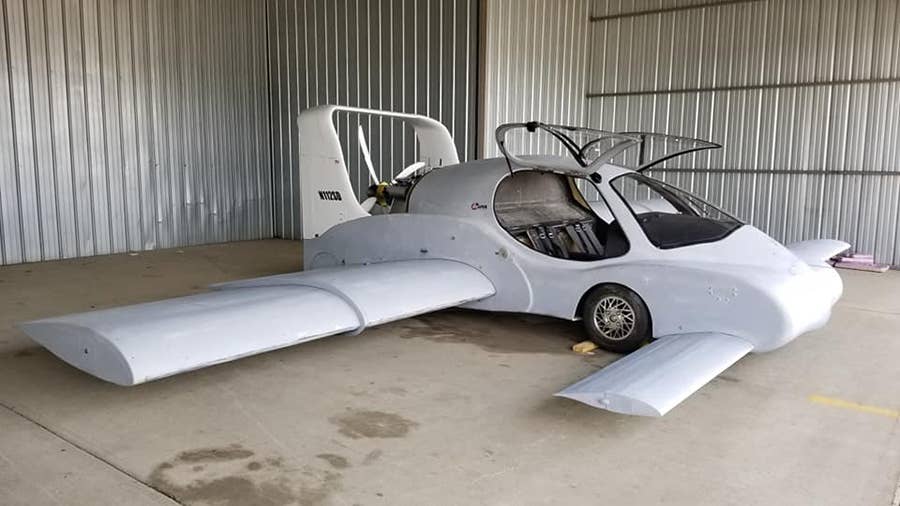
The Detroit Flying Cars WD-1 prototype suffered substantial damage during a test flight at the Willow Run Airport. Detroit Flying Car/Facebook
While the flying car is not a new concept, with the first example emerging in the 1940s, no company has of yet succeeded in producing a viable model. However, there are several companies currently working hard at the idea. This week, Detroit, Michigan-based Detroit Flying Cars had a mishap during a test flight, causing major damage to the aircraft.
The WD-1 received a special airworthiness certificate to conduct test flights in July. A Facebook post at the time said: “Now we can start testing its flying characteristics. But we will be approaching it cautiously.” Five months later, the test program had only proceeded to the highspeed taxi phase.
According to several news sources, the mishap was a highspeed taxi test gone wrong around mid-day on December 14. The WD-1 made an unplanned liftoff from the Willow Run Airport (KYIP) and shortly after the wheels came off the ground the aircraft made a hard impact. Still and video footage show substantial damage to the composite airframe. The Detroit Free Press said the owner and designer, Sanjay Dhall, was piloting the airplane and was transported to the University of Michigan.
Dhall’s business partner, David Han, told the Detroit Free Press the aircraft had conducted two successful taxi tests and Dhall was planning on only lifting the front two wheels off the ground. “It actually took flight, which was more than he had planned for,” Han said. The team plans to repair the WD-1 and continue the test program.
In flight, the flying car is powered by a 100-hp internal combustion engine. If successful, the WD-1 is expected to fly at 125 mph and have a range of 400 miles. On the ground, the WD-1 can be powered strictly by a 40 kW electric motor, which has a range of 50 miles. The ground range can be extended to 400 miles by recharging the electric motor with the internal combustion engine.

Sign-up for newsletters & special offers!
Get the latest FLYING stories & special offers delivered directly to your inbox






